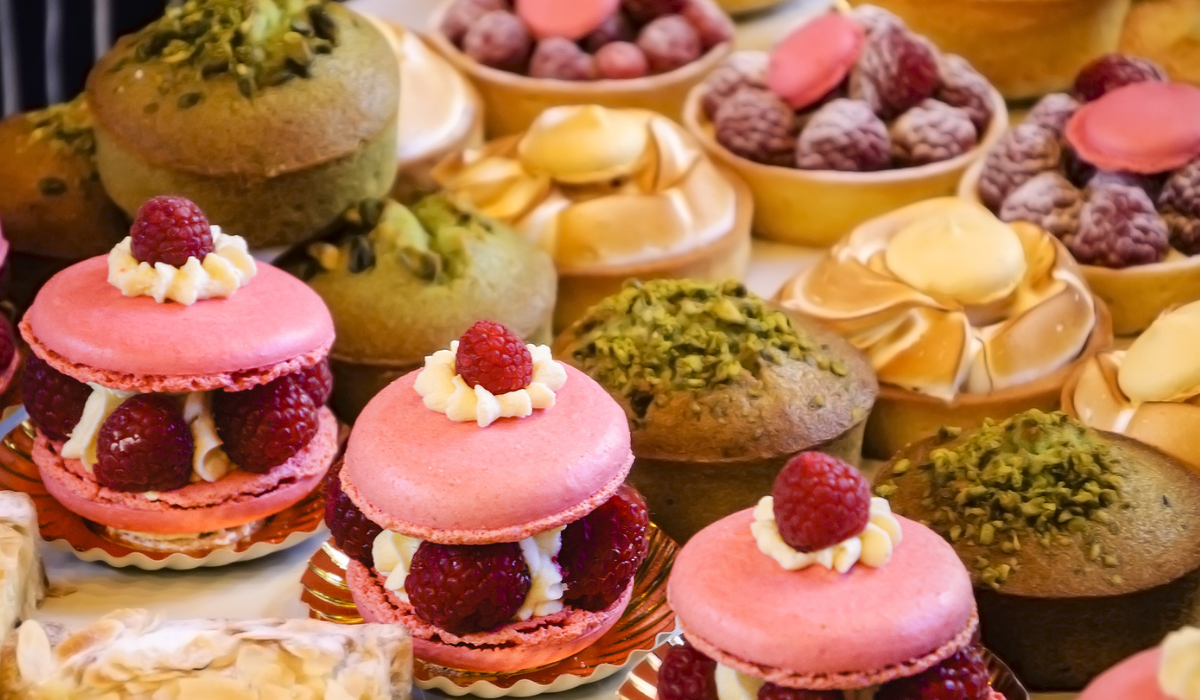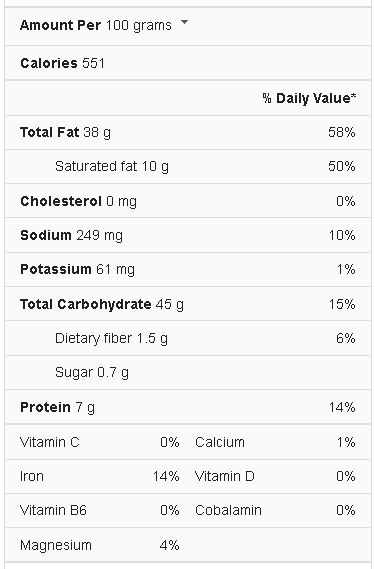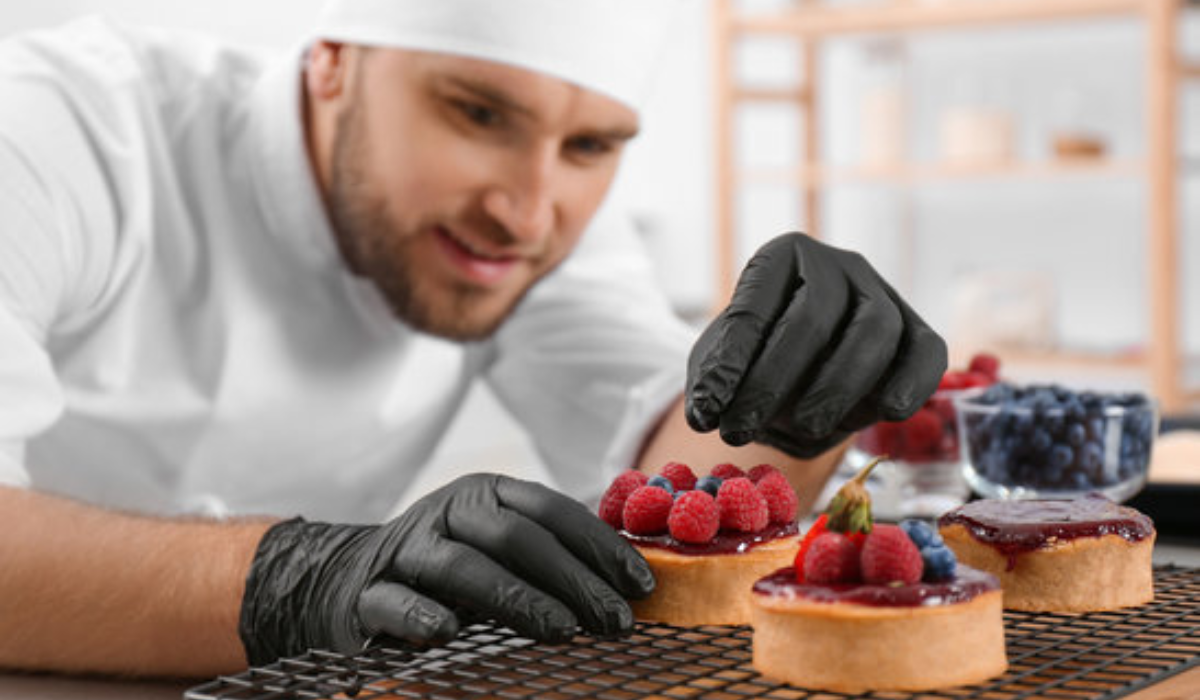One of the best and most delectable desserts is pastries. According to some research, consuming cakes and pastries benefits health in various ways. The fact that pastries are sweet and delicious is the only justification for this judgment. Carbohydrates are one of the primary sources of energy in many diets. Flour and sugar are typically combined to create cakes and pastries, which are nutritious sources of carbohydrates. They can provide enough power for the muscles, the brain, the neurological system, and the rest of the body. In addition, cake fats are excellent sources of energy.
Pasties come in a variety of mouthwatering forms, sizes, and variations. These delicious delicacies, which range from pies to strudels to pretzels, are not only an excellent addition to the Christmas season but are also highly healthful. Each of us deserves the occasional serotonin boost a tasty treat can provide. By affecting your mind and body in good ways, eating something sweet can give you a lift. Give yourself pleasure by baking one of these simple pastries for yourself.
Pastry Nutrition Facts
What is Exactly Pastry?
A dough comprised of flour, water, and shortening (solid fats like butter or lard) that can be savory or sweet is used to make baked goods called pastries. It’s common to refer to baked goods with added sugar as confectionery. “pastries” refers to baked goods created with ingredients like flour, sugar, milk, butter, shortening, baking powder, and eggs. Pastries are little tarts and other delicious baked goods. Pies, tarts, quiches, croissants, and pasties are typical pastries.
Added: Pastry differs from bread due to its higher fat content, which leads to a flaky or crumbly texture. A good pastry is crispy, light, and greasy but stiff enough to hold the filling’s weight. Before adding any liquid to a shortcrust pie, care must be given to combining the oil and flour thoroughly. By doing this, you may be sure that the flour particles are sufficiently coated in fat and are less prone to form gluten. However, overmixing causes the gluten to form lengthy strands, which toughen the dough.
Is Eating Pastries Healthy?
Eating pastries are also good for your health. Here are some health benefits of eating pies:
Provides Energy
Carbohydrates are one of the primary sources of energy in many diets. Flour and sugar are typically combined to create cakes and pastries, which are nutritious sources of carbohydrates. They can provide enough power for the muscles, the brain, the neurological system, and the rest of the body. In addition, cake fats are excellent sources of energy.
Strength and Bodybuilding
These sweet foods can give your body a lot of high-quality protein in addition to giving it energy. Eggs and milk, two of the most significant protein sources known to exist, are used in cakes and other baked goods, and calcium in milk helps keep bones and teeth healthy. Cakes made with dry fruits like almonds, cashews, and others can give your body plenty of vitamins to boost your immune system.
Enhances Digestion
Added: Berries, apples, and pineapples are a few examples of fruit toppings on cakes and pastries that are also a high source of fiber. Foods high in fiber can help our bodies digest food more efficiently. Carrots are rarely used in cakes and pastries, despite having a lot of fiber. All the fruits above are found in pastries and cakes, increasing your body’s fiber levels, improving digestion, and lowering your risk of heart disease.
Cakes and Pastries Lift the Mood
High-carbohydrate foods promote the production of substances in the body and brain that improve emotional wellbeing, such as serotonin. Your body and mind will benefit from visiting your favorite Dessert. Utilize this scientific approach to its fullest and indulge in your favorite sweet treat guilt-free. You are taking excellent care of your physique.
Eating Dessert can Enhance your Weight Management
Cravings for delicious foods are one of the leading causes of diet failure. The average adult’s short-term health objectives will improve if they avoid consuming desserts together. Researchers have demonstrated, however, that individuals who consume desserts as part of an overall healthful diet can achieve long-term weight loss. This is true because your body responds to small amounts of sugar to satisfy your craving for Dessert.
Choosing to abstain from candy to lose weight would typically result in binge eating and overeating until you eventually splurge. A healthy diet is achieved by balancing temptations with nutritious food and daily activity instead of eliminating them.
What’s the Difference Between Cake and Pastry?
If sliced, they appear similar at first glance, but when it comes to the recipe, ingredients, and preparation method, they couldn’t be further dissimilar. To learn how they differ from one another, scroll down.
- According to bakery specialists, the main distinction between cakes and pastries is the process used to make the recipes and the ingredients. On the one hand, pastries require fewer components and a more straightforward production process than cake, which has more ingredients and a convoluted preparation.
- The term “cake” is broad. Cakes can have or not have frosting. But frosting is a staple of pastries.
- We can all agree that adding decoration and color increases the dish’s value. Additionally, they are unavoidable when it comes to cakes and pastries. Pastries have little ornamentation, unlike cakes, which are heavily ornamented and exist in many different colors.
- Although bakery studios have started experimenting with pastries over time, cakes remain outstanding. People frequently mention their names at the top of cakes, but not in the case of pastries.
- Despite the recent rise in consumption of both pastries and cakes, specialists in the bakery claim that the nutritional makeup of each is entirely different. Cakes are generally more nutrient-dense because of their extensive ingredient list.
- Additionally, some solutions are suitable for diabetics and lactose intolerant individuals, thanks to the growth of healthy eating culture in urban areas. In contrast, pastries are still in the development stage and are less nutrient-dense than cakes.
- Despite sharing a similar appearance, their production and consumption levels are not the same. The cake is more frequently served as an exceptional occasion food at birthday parties, weddings, marriage anniversaries, and other joyous occasions.
- While pastries are more commonly consumed for breakfast and high tea in different cultures, they are more like a staple food item. Both have unique and dynamic production cycles that consider the consuming element. Cakes are only offered in sample sizes, whereas bakery shops only create pastries in quantity.
- In essence, all cakes are pastries, but not all pastries are cakes. The primary distinction between cakes and pastries is that cakes contain a large number of components, many of which are healthy as well.
How to Keep Pastries Fresh?
Here are some methods to keep your pastries fresh:
Preparing your Pastries for Storage
Your pastries must be extraordinary before utilizing any of these techniques. Set them on a cooling rack until they reach room temperature if they are so fresh from the bakery that they are still warm.
Keeping Pastry Fresh for 24-48 Hours
Simply place them in a paper bag, inside a zip-lock plastic food storage bag, and gently push out any excess air as you seal the pack if all you want in the morning is fresh pastries waiting for you. They can then be kept in your pantry or a cabinet until you need them. Instead of placing them immediately into the plastic bag, put them on paper first. This helps them keep their delightful, crisp wetness without becoming soggy from condensation on the interior of the plastic bag.
Keeping Pastry Fresh for 48 Hours-1 Week
The damp air inside a refrigerator can impact the crispness of a pastry’s crust, so it’s best to avoid refrigerating your tarts for shorter lengths. However, this becomes irrelevant after a day because they’ll be a little less crisp, and the refrigerator helps them maintain their freshness for a bit longer.
Wrap each of your pastries in plastic wrap individually, careful not to squish them as you wrap. Squeeze out any remaining air before placing them in a paper bag and then a zip-lock bag. Put everything in an airtight container if you have one for food storage. After that, you can put your box of pastries in the refrigerator.
Keeping Pastry Fresh for 1-3 Week
Follow the instructions for a week, but freeze them to extend their shelf life instead of keeping them in the fridge. When it’s time to eat, take them out of the packaging and let them defrost at room temperature on a cooling rack rather than attempting to thaw them in the microwave.
Serving your Freshly Stored Pastries
No matter how you decide to store your pastries, heating them in the oven is still the only way to serve them. Even while cold pastries might be tasty, unless they are fresh, they won’t taste appropriate unless they are warmed up. On a baking sheet that has been lightly greased, place them in the oven after preheating it to 175° C (Gas Mark 4). Avoid the temptation to microwave them instead; they will lose their delightful crispness and come up soggy.
How to Make Pastries?
This is one of the best Shortcrust pastry recipes:
Ingredients
- 225g plain flour
- 100g butter, diced
- pinch salt
Steps to Follow
- 225g plain flour into a large bowl, add 100g diced butter, and rub in with your fingertips until the mixture resembles fine breadcrumbs.
- Stir in a pinch of salt, add 2-3 tbsp water and mix to a firm dough.
- Knead the dough briefly and gently on a floured surface.
- Wrap in cling film and chill while preparing the filling.
Conclusion
In addition to being delicious, pastries are also nutritious and well-liked. Many delicious sweet and savory dishes may be made with pastry. Thus, every home baker should have a few pastry recipes in their collection. However, because there are so many different types of pies from different cuisines worldwide, it can be challenging to decide which to use for the correct product and filling. Butter, shortening, full-fat margarine, lard, or other oils or animal fats may be used to enhance a pastry. These are interchangeable in some varieties of pie, but they significantly impact the product’s texture, flavor, or workability in others.



